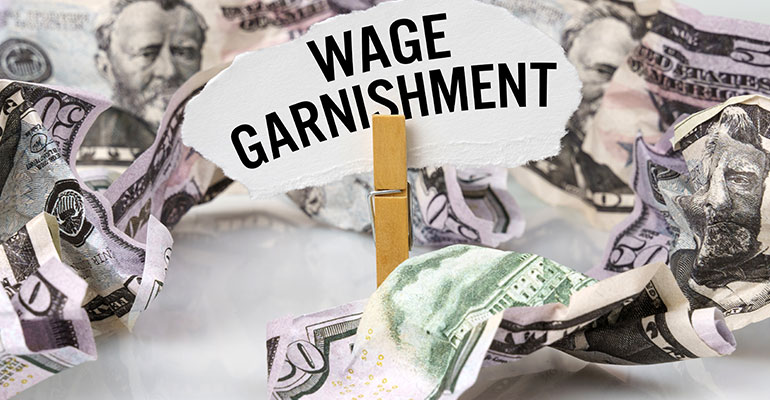
Wage garnishment is a legal process that allows a creditor to collect a debt by taking a portion of an individual’s wages or salary. The amount that can be garnished is typically based on a percentage of the individual’s disposable income, which is the income remaining after deductions for taxes, health insurance, and other necessary expenses. In this post, we will explore what is considered disposable income for wage garnishment and how it is calculated.
Gross Income
To determine disposable income, the first step is to calculate an individual’s gross income, which is the total amount of money earned before any deductions. Gross income includes wages, salaries, tips, bonuses, commissions, and other forms of compensation.
Federal, State, and Local Taxes
The next step is to deduct federal, state, and local taxes from gross income. This includes income tax, Social Security tax, Medicare tax, and any other applicable taxes. These deductions are required by law and are not considered part of disposable income.
Mandatory Deductions
After taxes are deducted, mandatory deductions such as health insurance premiums and retirement contributions are subtracted from the remaining amount. These deductions are typically required by law or by the employer and are not considered part of disposable income.
Voluntary Deductions
Some deductions are voluntary, such as contributions to a 401(k) plan or charitable donations. These deductions are subtracted from the remaining amount after mandatory deductions, and the resulting amount is considered part of disposable income.
State-Specific Exemptions
Each state has specific exemptions for wage garnishment that allow individuals to keep a certain amount of their income. These exemptions are based on the individual’s income level and the number of dependents they have. For example, in California, an individual with no dependents can keep up to 75% of their disposable income, while an individual with one dependent can keep up to 85%.
Disposable Income
Subtract any state-specific exemptions from the remaining amount after deductions. The resulting amount is considered disposable income and is the amount that can be garnished by a creditor. It is important to note that wage garnishment is subject to federal and state laws, which set limits on the amount that can be garnished. In addition, some types of income are exempt from wage garnishment, including Social Security benefits, disability benefits, and certain types of retirement benefits. However, these exemptions may vary by state and situation.
Non-Wage Income
Disposable income for wage garnishment includes only income earned from an individual’s employment. Other sources of income, such as rental income, investment income, or self-employment income, are not included in disposable income for wage garnishment.
Multiple Garnishments
If an individual has more than one garnishment, the total amount that can be garnished is limited to the maximum amount allowed by law. In this case, each garnishment would receive a pro-rata share of the disposable income. It is crucial to note that multiple garnishments can have a significant impact on an individual’s finances. The combined number of garnishments may leave the individual with very little disposable income to cover basic living expenses. It may be advisable to seek legal counsel or credit counseling to explore options for consolidating or settling debts to avoid multiple garnishments. Additionally, some states may have specific laws and exemptions related to multiple garnishments, so it is important to be aware of these regulations.
Bankruptcy
Filing for bankruptcy can stop wage garnishment, but it may also require the liquidation of assets to pay off debts. In some cases, bankruptcy may be a better option than wage garnishment, as it can provide a fresh start and a chance to rebuild credit. However, it is important to note that filing for bankruptcy has serious consequences and should be carefully considered.
Bankruptcy can negatively affect credit scores and make it difficult to obtain credit in the future. Additionally, not all debts may be discharged through bankruptcy, and it can be a complex and time-consuming process. It is important to consult with a bankruptcy attorney to fully understand the potential risks and benefits before making a decision.
Negotiation
To avoid wage garnishment, it might be possible in some circumstances to negotiate a payment plan or settlement with the creditor. This may entail negotiating a reduced payment amount or an extended payment plan with the help of a debt counselor or lawyer. It is important to note that negotiating a settlement may have consequences for credit scores and future borrowing ability.
Disposable income for wage garnishment is calculated by deducting taxes, mandatory and voluntary deductions, and state-specific exemptions from gross income. Understanding these calculations and the limits set by federal and state laws can help individuals facing wage garnishment to better manage their finances and protect their income. Seeking legal advice from tax resolution/consultation services and exploring alternatives such as negotiation or bankruptcy may also be options to consider.
